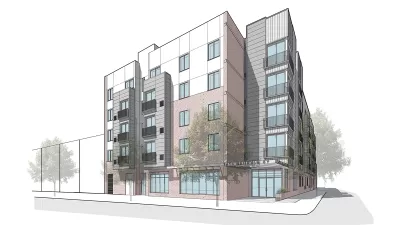New regulations prohibit cities from enacting stricter efficiency standards in new buildings.

The International Code Council, a private consortium that controls building code regulations for most of the United States and Latin America, has voted to reduce the power of cities and local jurisdictions over building efficiency requirements. "The decision came more than a year after the construction and gas industry groups that wield heavy influence at the International Code Council objected to aggressive new energy codes for which government officials voted," reports Alexander C. Kaufman in the Huffington Post.
The new system places building codes governing energy systems and insulation "under a separate 'standards' process that, despite soliciting input from local officials, will give industry more control over the outcome." While the ICC promises that government officials will still have "the strongest voice on the committee," city officials worry the move only helps private companies maximize profit and "warned that it could encourage governments to shift away from using the ICC’s code." Organizations including the American Institute of Architects criticized the new plan as "a step backwards for climate action," while industry groups "cheered" the announcement.
Local governments, many of which don't have their own building code authority, have been signing on to ICC regulations as a way to move toward more efficient building codes. "Buildings use roughly 40% of all energy produced in the U.S. for heating, power and cooking appliances, and generate a proportional share of the country’s planet-heating gases." City leaders and Biden administration officials worry the changes could "likely derail and slow" the progress made on energy efficiency in new buildings. "Kelly Speakes-Backman, the Energy Department’s acting assistant secretary for energy efficiency and renewable energy, asked the code-making group to 'not proceed with these proposed changes until these questions and concerns can be adequately addressed.'"
FULL STORY: After Championing Greener Building Codes, Local Governments Lose Right To Vote

Planetizen Federal Action Tracker
A weekly monitor of how Trump’s orders and actions are impacting planners and planning in America.

Map: Where Senate Republicans Want to Sell Your Public Lands
For public land advocates, the Senate Republicans’ proposal to sell millions of acres of public land in the West is “the biggest fight of their careers.”

Restaurant Patios Were a Pandemic Win — Why Were They so Hard to Keep?
Social distancing requirements and changes in travel patterns prompted cities to pilot new uses for street and sidewalk space. Then it got complicated.

Platform Pilsner: Vancouver Transit Agency Releases... a Beer?
TransLink will receive a portion of every sale of the four-pack.

Toronto Weighs Cheaper Transit, Parking Hikes for Major Events
Special event rates would take effect during large festivals, sports games and concerts to ‘discourage driving, manage congestion and free up space for transit.”

Berlin to Consider Car-Free Zone Larger Than Manhattan
The area bound by the 22-mile Ringbahn would still allow 12 uses of a private automobile per year per person, and several other exemptions.
Urban Design for Planners 1: Software Tools
This six-course series explores essential urban design concepts using open source software and equips planners with the tools they need to participate fully in the urban design process.
Planning for Universal Design
Learn the tools for implementing Universal Design in planning regulations.
Heyer Gruel & Associates PA
JM Goldson LLC
Custer County Colorado
City of Camden Redevelopment Agency
City of Astoria
Transportation Research & Education Center (TREC) at Portland State University
Camden Redevelopment Agency
City of Claremont
Municipality of Princeton (NJ)





























